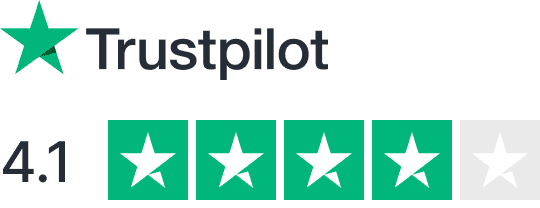Hiring LATAM talent can save U.S. companies time and money, but onboarding effectively is crucial for long-term success. Here’s what you need to know:
- Benefits of LATAM Talent: Fast hiring (as quick as 2 weeks), affordable rates (starting at $31/hour), overlapping time zones for better collaboration.
- Key Onboarding Challenges:
- Cultural Differences: LATAM professionals value teamwork and relationship-building, while U.S. workplaces often focus on individual achievements and direct communication.
- Language Barriers: Tools like Slack with translation features can improve collaboration by up to 25%.
- Time Zones: Use shared calendars and set core working hours to reduce delays by 30%.
- Legal Compliance: Understand country-specific labor laws (e.g., Brazil’s CLT or Mexico’s tax rules) to avoid risks.
- Solutions:
- Cross-cultural training and clear communication expectations.
- Structured onboarding plans (e.g., 90-day programs) to boost retention by 82%.
- Career development opportunities to increase retention rates by 34%.
Quick Tip: Investing in strong onboarding processes not only improves team integration but also enhances productivity by over 70%.
How to Reinforce Your Culture with a Strong Onboarding Process
Communication and Work Style Differences
Research shows that cultural differences often lead to communication challenges in remote teams.
Work Style Expectations
Workplace norms in Latin America (LATAM) differ from those in the United States in several ways. US companies typically emphasize individual achievements and direct communication, while LATAM professionals often prioritize teamwork and relationship building. For example, 70% of LATAM employees prefer collaborative work environments, compared to only 50% of US workers.
| Aspect | LATAM Style | US Style |
|---|---|---|
| Decision Making | Team-oriented, consensus-driven | Quick, individual-focused |
| Meeting Structure | Relationship-focused, then business | Business-first, direct |
| Hierarchy | More formal, structured | Flatter, informal |
| Feedback Style | Indirect, focused on harmony | Direct, task-focused |
To address these differences, it’s important to set clear expectations from the start. Cross-cultural training can help team members understand varying approaches. For instance, when scheduling meetings, allocate time for relationship-building activities. Adjusting to these work style differences also helps tackle language challenges.
Language and Communication Tools
Once work style adjustments are in place, addressing language barriers can further improve team collaboration. Effective communication requires the right mix of technology and human interaction. Companies using bilingual tools have reported 30% gains in team productivity and collaboration.
"Effective onboarding requires understanding and addressing the unique communication styles of diverse teams." – Ryan Boyle, Head of Engagement, CareMinds
A great example comes from CareMinds, which introduced Slack’s translation features in March 2023. This change led to a 25% improvement in project turnaround times and strengthened collaboration among their LATAM developers.
Here are some practical strategies to bridge language gaps:
- Use bilingual platforms like Slack or Teams with translation features.
- Pair LATAM team members with US colleagues for mutual language and cultural support.
- Foster open dialogue by creating spaces where team members feel comfortable sharing feedback.
Time Zones and Remote Work Setup
Managing time zones effectively is crucial when onboarding talent from LATAM. Research shows that 70% of remote teams struggle with time zone differences, which can disrupt collaboration and delay projects.
Time Zone Management Tips
Without proper planning, time zone misalignment can decrease team productivity by as much as 30%. To counter this, successful companies combine scheduling strategies with strong communication practices. Popular methods include setting core working hours, rotating meeting times, and using asynchronous tools to ensure overlapping work periods.
For instance, in March 2023, a U.S.-based tech company successfully onboarded a remote team from Brazil by implementing a shared calendar tool to highlight overlapping hours. This simple adjustment resulted in a 30% drop in project delays and a 40% boost in team satisfaction.
"Effective time zone management is not just about scheduling; it’s about creating a culture of flexibility and understanding."
- John Doe, Remote Work Consultant, Remote Work Solutions
Remote Team Connection Methods
Keeping remote teams connected is key to smooth onboarding. Companies that focus on strong communication strategies report up to a 25% increase in productivity.
- Digital Workspace Tools
Platforms like World Time Buddy and Google Calendar help teams easily identify overlapping hours, reducing scheduling conflicts and making regular meetings more manageable. - Asynchronous Collaboration
Tools such as Asana and Trello allow teams to track progress without needing constant real-time interaction, enabling smoother collaboration across different time zones.
"Effective communication in remote teams is not just about the tools you use, but also about the culture you create around collaboration."
- Maria Gonzalez, Remote Work Consultant, Remote Work Institute
To strengthen team bonds, some companies introduce virtual activities during shared working hours. For example, CareMinds implemented bi-weekly virtual coffee chats, which significantly improved engagement among their LATAM developers. Recording key meetings and using shared documents also ensures everyone stays informed, no matter their schedule.
Up next, we’ll dive into legal and HR requirements for a complete onboarding process.
sbb-itb-a3fbb4e
Legal and HR Requirements
Hiring talent across LATAM comes with its challenges, especially when it comes to navigating the different legal systems. Each country has its own labor laws, tax rules, and employment contract requirements, making compliance essential to avoid hiring risks.
Legal Compliance Steps
Understanding and following local laws like Brazil’s CLT or Argentina’s ANSES registration is a must.
Here’s a breakdown of some key compliance requirements by country:
| Country | Primary Requirements | Mandatory Benefits |
|---|---|---|
| Mexico | Work permits, tax registration | 15 days vacation, year-end bonus |
| Chile | Employment contracts, social security | Health insurance, severance pay |
| Brazil | CLT compliance, work hours regulation | 13th salary, transportation allowance |
"Navigating the legal landscape in LATAM requires a nuanced understanding of each country’s regulations. Companies often underestimate the complexity of local labor laws." – Carlos Tavares, Legal Consultant, CareMinds
Once these legal steps are in place, focus shifts to managing payroll and benefits to ensure full compliance.
Payroll and Benefits Management
Handling payroll and benefits for international teams involves more than just sending payments. You’ll need to account for currency fluctuations, meet tax obligations, and provide country-specific benefits.
Staff augmentation services can simplify this process. For instance, CareMinds offers payroll and benefits administration tailored to LATAM markets. They handle everything from tax withholding to distributing required benefits, with flexible options and rates starting at $31/hour.
To stay compliant and ease administrative work, many companies:
- Collaborate with local legal experts
- Use compliance tracking systems
- Schedule regular audits
Team Integration and Employee Retention
Research shows that well-planned integration programs can improve both employee retention and productivity. This section focuses on strategies for structured onboarding and long-term development to help new hires feel connected and motivated.
First 90 Days Plan
A detailed 90-day plan can offer new employees the clarity they need to adapt to their roles and the company culture.
| Week | Focus Area | Key Activities |
|---|---|---|
| 1-2 | Orientation | Meet the team, set up tools, cultural training |
| 3-4 | Role Clarity | Assign projects, set expectations, mentor pairing |
| 5-8 | Integration | Collaborate on team projects, conduct feedback sessions |
| 9-12 | Growth | Assess skills, plan development, set goals |
"A structured onboarding process is crucial for integrating LATAM talent." – John Smith, HR Director, Global Tech Solutions
In early 2023, a Brazilian tech company introduced a 90-day onboarding program for its LATAM hires. The approach included weekly check-ins and mentorship opportunities. The results were impressive: employee satisfaction rose by 30%, and turnover dropped by 25% within a year. Beyond the initial onboarding phase, ongoing career development remains essential for keeping employees engaged.
Career Development Plans
Focusing on career growth is a key factor in retaining LATAM talent. Companies that prioritize employee development report a 34% boost in retention rates, with 70% of employees saying they would stay longer at organizations that support their career progression.
Successful development plans often include:
- Regular training in both technical and interpersonal skills
- Leadership mentoring programs
- Opportunities for cross-cultural collaboration on projects
"Investing in employee development is not just a benefit; it’s a necessity for retaining top talent." – Maria Gonzalez, HR Director, Tech Innovations
Monthly check-ins can help track progress, improve skills, and strengthen teamwork. Collaborating with firms like CareMinds can simplify talent matching and provide tailored HR support, ensuring LATAM professionals integrate smoothly and stay for the long term.
Conclusion: Keys to Successful LATAM Talent Onboarding
Structured onboarding can lead to an 82% improvement in new hire retention and a 70% increase in team productivity.
To make onboarding effective, it’s important to focus on a few critical areas:
| Focus Area | Key Components | Impact |
|---|---|---|
| Communication | Multilingual tools and cultural training | Improves clarity and bridges language gaps |
| Time Zone Management | Flexible schedules and defined availability | Ensures smooth collaboration across regions |
| Legal Compliance | Following local regulations and payroll setup | Reduces legal risks |
| Team Integration | Structured 90-day plans and regular check-ins | Boosts engagement and retention |
These elements are essential for aligning onboarding with both operational goals and team cohesion.
For example, CareMinds’ March 2023 case study highlights a U.S. tech company that saw productivity jump by 30% in the first month after implementing a tailored onboarding process [2]. Their approach included a two-week trial period, achieving a 96% success rate in matching hires, with an average hiring time of just two weeks [2].
















